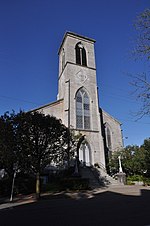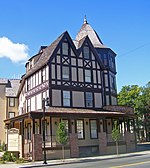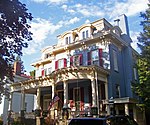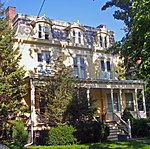Dietz Stadium
1949 establishments in New York (state)American football venues in New York (state)Athletics (track and field) venues in New York (state)Baseball venues in New York (state)Defunct baseball venues in the United States ... and 6 more
High school football venues in the United StatesNational Premier Soccer League stadiumsSoccer venues in New York (state)Sports venues completed in 1949Sports venues in New York (state)Sports venues in Ulster County, New York
Robert Dietz Memorial Stadium is a football stadium in Kingston, New York. Dietz Stadium is the home field of the Kingston High School Tigers football team. Originally the Kingston Municipal Stadium, in 1954 it was dedicated to Robert H. Dietz, a Medal of Honor recipient killed in World War II. Dietz was a Kingston native.
Excerpt from the Wikipedia article Dietz Stadium (License: CC BY-SA 3.0, Authors).Dietz Stadium
Shamrock Lane,
Geographical coordinates (GPS) Address Nearby Places Show on map
Geographical coordinates (GPS)
| Latitude | Longitude |
|---|---|
| N 41.9346 ° | E -74.027586111111 ° |
Address
Dietz Memorial Stadium
Shamrock Lane
12401
New York, United States
Open on Google Maps








